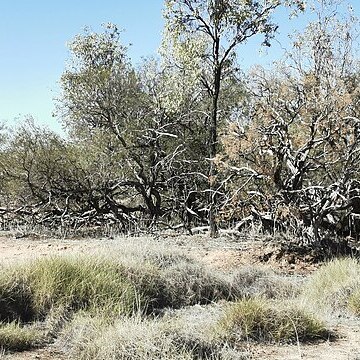Plants forming hummocks 0.3–0.45 m high, to 2 m wide. Flowering culms to 1 m high. Leaves: sheath scaberulous between nerves; orifice ciliolate; blade straight, folded, 11–30 cm long, 0.7–1 mm wide, scabrous, pungent-pointed. Panicles usually dense, (9–) 15–18 (–27) cm long, 1–2 cm wide; axis subterete; branches to 2.2 cm long, sometimes translucently dotted. Spikelets borne on lateral branches only, oblong or cuneate-elliptic, 13–20 mm long, 4–10 mm wide, closely 5–8-flowered; pedicel 3–20 mm long. Glumes ±equal, oblong, 8.5–14 mm long, acuminate, entire, muticous or mucronulate, cartilaginous, glabrous; lower glume 5–7 (–9)-nerved, carinate; upper glume 3 (–9)-nerved, rounded in lower part, carinate upwards. Callus minute, blunt, bearded with hairs 2–3 mm long. Basal lemma lanceolate, 9–10 mm long, with 2 small blunt (sometimes emarginate) lobes, with or without a mucro about 0.8 mm long in sinus, cartilaginous, usually 9-nerved (in 3 groups of 3), hirsute near lower margins and midnerve; margins narrow, membranous. Palea not more than 1 mm shorter than lemma, minutely 2-lobed, cartilaginous, membranous or hyaline, usually hirsute near base. Anthers c. 4 mm long.

